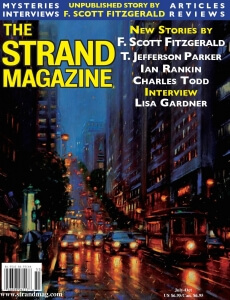10 Surprising Facts About the Roaring Twenties
Many read Roaring Twenties and picture Gatsby-inspired parties. But what else did the 1920s bring? Some of the revelations, fads, and nuances of this era may surprise you.
- While the 18th Amendment made the manufacture, import, and sale of beer, wine, and hard liquor illegal, Prohibition did not make it illegal to actually drink alcohol. It was bottoms up if you could get the hooch in your cup.
- Many believe speakeasies began popping up during the 1920s, but these illegal establishments date back to the 1880s, referring to unlicensed bars where patrons were implored to “speak easy” as not to draw the law’s attention.
- The introduction of sleeveless dresses made it important for women to remove “objectionable hair.” Prior to this revolution in ladies’ clothing, even the word underarm was considered shocking because of the body part’s proximity to a woman’s bossom.
- The fashions of the Twenties also included higher hemlines, baring more of a woman’s gams. Even still, most women shrugged at the idea of shaving their legs.
- While the Roaring Twenties often reflected an era of prosperity and revelry, many farmers struggled due to falling farm prices after the high production of World War I, resulting in one in four farms being sold.
- Many of the brand-name foods we enjoy today originated during the 1920s, such as Wonder Bread, Baby Ruth Candy Bars, Yoo-Hoo Chocolate Drink, Kool-Aid, Welch’s Grape Jelly, Reese’s Peanut Butter Cups, Wheaties, Hostess Cakes, Peter Pan Peanut Butter,
 Velveeta Cheese, and more.
Velveeta Cheese, and more.
- Fads and other spectator sports often began as dares; for example, Alvin “Shipwreck” Kelly, a professional stuntman, was dared to sit atop a flagpole. People took notice and Kelly later set the World Record for pole sitting at 49 days with a crowd of 20,000 gawkers.
- The most famous gangsters of the Roaring Twenties all had nicknames: Al “Scarface” Capone, George “Bugs” Moran, Charles “Lucky” Luciano, and Jack “Legs” Diamond. The odd man out was Dutch Schultz.
- While the word teenager wasn’t used until decades later, the teenage mindset began during the 1920s with the wider use of automobiles, allowing adolescents less supervision, greater independence, and easier, more private access to “bedrooms on wheels.”
- Fortuitously, Alexander Fleming discovered penicillin during the 1920s after returning from a two-week vacation to find that, before he left for his holiday, he had accidentally contaminated an experiment. That contamination prevented the growth of bacteria, which penicillin is now used to treat.


i love the 1920 especially with Babe Ruth i was 29 in the 1920’s!